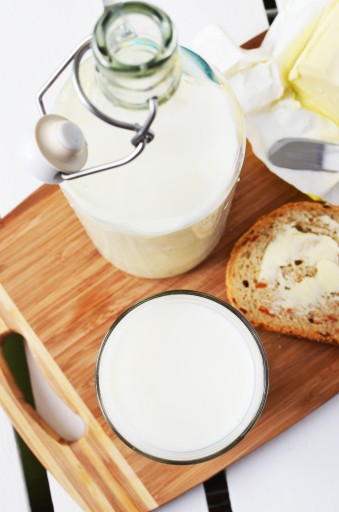By Julie Murphree, Arizona Farm Bureau:
I get all sorts of fun questions from our Arizona families inquiring about Arizona agriculture and even specific nutrition questions. But this one that recently came across my Twitter feed is my favorite: “@Cottonaggie Why does milk give older people gas? I like milk chocolate and white but they give me you know what.”
After my explosion of laughter over this question, I realized it’s a legitimate question that shouldn’t be left to the uninitiated, and certainly deserves a solid answer from a nutritionist.

And it turns out our intestinal fortitude might start to diminish as we age. According to Terri Verason, MS, RDN, Director of Nutrition Education for Dairy Council of Arizona, your lactase enzyme levels and activity can decline. “It’s not unusual for someone who has enjoyed milk all their lives and understands the health benefits of it to all the sudden discover it gives you gas.”
A longtime nutritionist for the Dairy Council of Arizona, Verason shares some nutrition insights. “Milk and dairy foods provide numerous nutrients and health benefits, but sometimes they can be hard to digest for some people,” she says. “This difficulty with digesting milk is called lactose intolerance and it can range from mild to more severe symptoms, such as bloating, gas and diarrhea. Lactose intolerance occurs because the body is low in the enzyme, called lactase, which is needed to break apart the carbohydrate in milk, lactose and it can be either temporary or more lasting. But there are still ways to get the powerful nutrient package of milk and dairy foods without experiencing the unpleasant side effects.”
The National Dairy Council recommends the following to help those with developed intolerance to dairy.
- Sip it: Start with a small amount of milk daily (2-3 ounces) and increase consumption slowly over several days or weeks to build your tolerance. A serving of milk is 8 ounces, but you can find the amount that works with your tolerance level.
- Try it: Opt for lactose-free milk and milk products. They are still real milk products, just without the lactose, and they provide the same nutrients as regular dairy foods, and taste just as great.
- Stir it: Mix milk with other foods, such as soups and cereal, or blend it with fruit or alongside a large meal. Solid foods help slow digestion and allows the body more time to digest lactose.
- Slice it: Top sandwiches or crackers with natural cheeses such as Cheddar, Colby, Monterey Jack, mozzarella and Swiss, all of which are low in lactose. These cheeses contain less than 0.1 grams of lactose per serving.
- Spoon it: Enjoy easy-to-digest yogurt. Traditional and Greek-style yogurt that contain live and active cultures help to digest lactose.
Web links for the article
Related articles
- The Great Milk Debate: Is White Milk Healthier Than Chocolate?
(fillyourplate.org) - Cereal Flavored Milk, for the Kid in All of Us (fillyourplate.org)
- Celebrate Dairy Month With Gourmet Milkshakes Created By Local Chefs
(fillyourplate.org)

